
Piercing the veil
A new exhibition at Buxton Contemporary finds a rich complexity in the shadowy terrain between life and death.
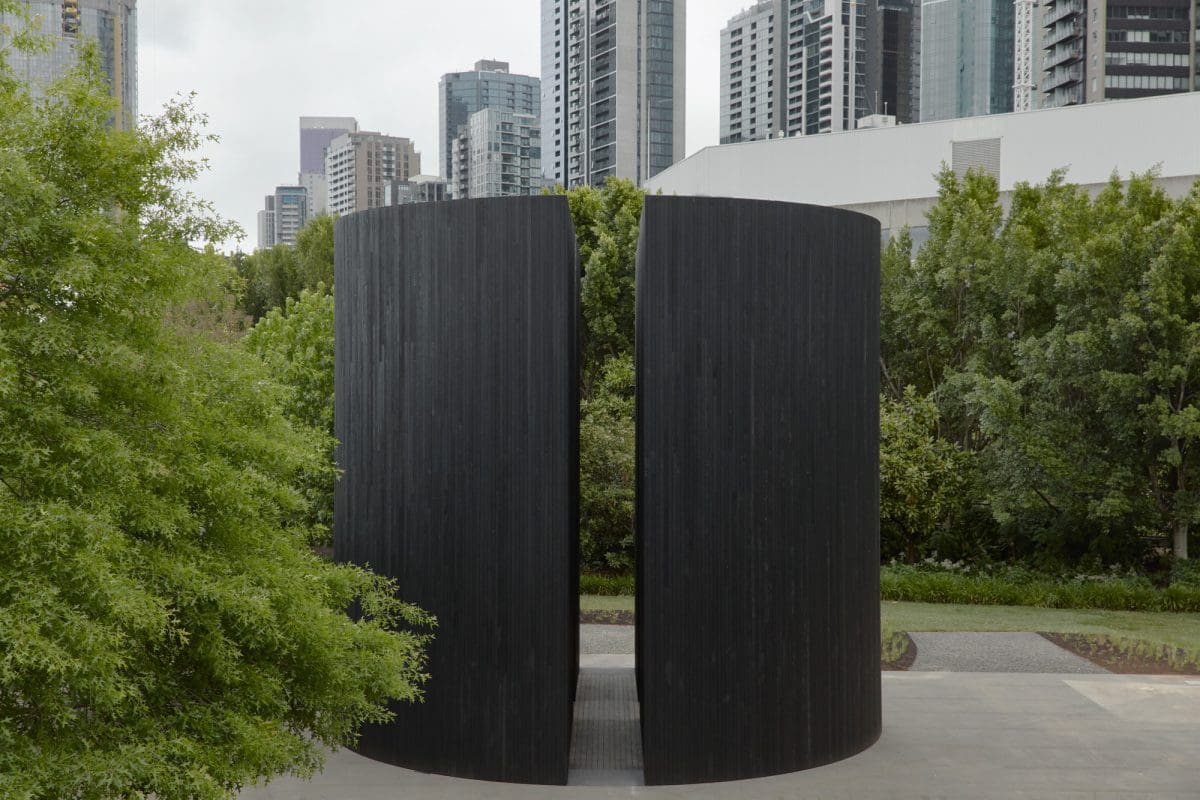
Installation view of In Absence, 2019 designed by Yhonnie Scarce and Edition Office for the 2019 Architecture Commission at NGV International, Melbourne from 23 November 2019 – April 2020. Photo: Tom Ross.
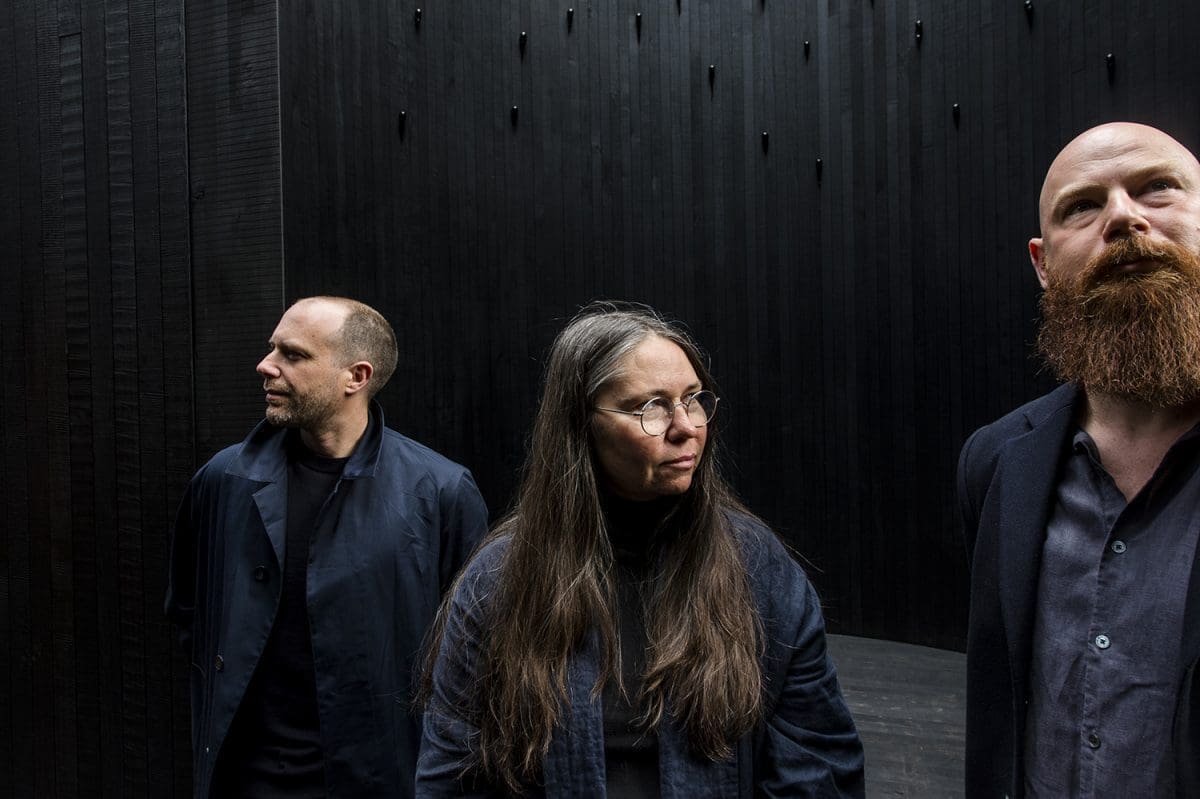
Portrait of (L-R) Aaron Roberts, Director, Edition Office; Yhonnie Scarce, contemporary artist; and Kim Bridgland, Director, Edition Office inside In Absence, 2019 the 2019 Architecture commission at NGV International, Melbourne from 27 November 2019–April 2020. Photo: Eugene Hylan.
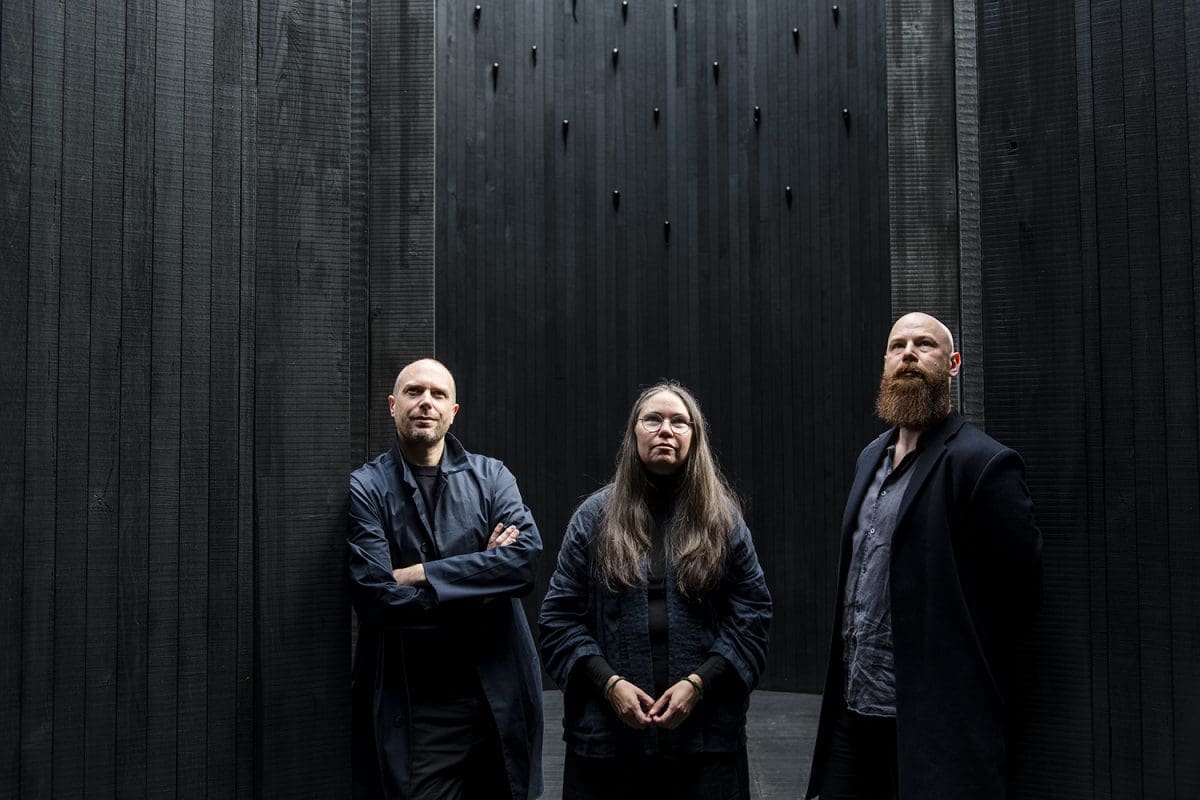
Portrait of (L-R) Aaron Roberts, Director, Edition Office; Yhonnie Scarce, contemporary artist; and Kim Bridgland, Director, Edition Office inside In Absence, 2019 the 2019 Architecture commission at NGV International, Melbourne from 27 November 2019–April 2020. Photo: Eugene Hyland.

Installation view of In Absence, 2019 designed by Yhonnie Scarce and Edition Office for the 2019 Architecture Commission at NGV International, Melbourne from 23November 2019 –April 2020. Photo: Ben Hosking.
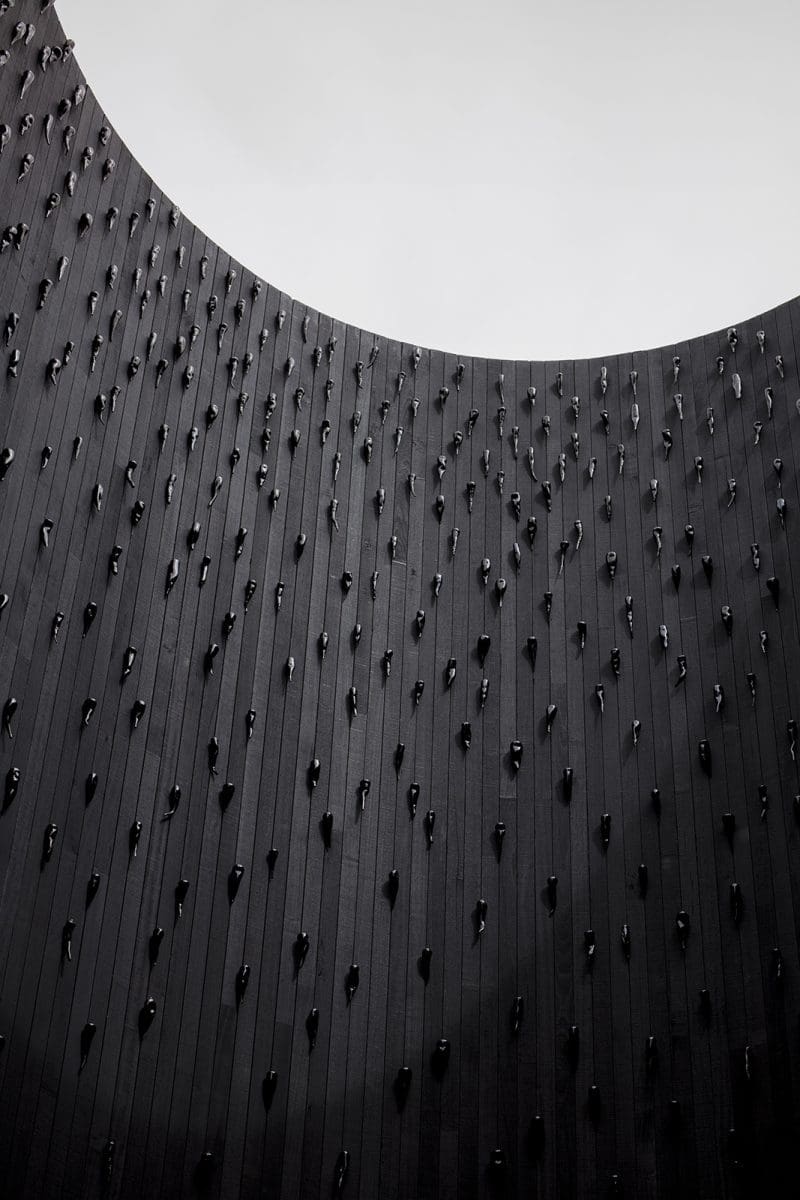
Installation view of In Absence, 2019 designed by Yhonnie Scarce and Edition Office for the 2019 Architecture Commission at NGV International, Melbourne from 23November 2019 –April 2020. Photo: Ben Hosking.

Installation view of In Absence, 2019 designed by Yhonnie Scarce and Edition Office for the 2019 Architecture Commission at NGV International, Melbourne from 23November 2019 –April 2020. Photo: Ben Hosking.

Installation view of In Absence, 2019 designed by Yhonnie Scarce and Edition Office for the 2019 Architecture Commission at NGV International, Melbourne from 23November 2019 –April 2020. Photo: Ben Hosking.
Yhonnie Scarce is an artist known for working with glass, often in the form of mass installation and sculpture. She belongs to the Kokatha and Nukunu peoples of South Australia, and much of her work is a response to the ongoing effects of colonisation, which she addresses by bringing out stories and histories that have been concealed or wilfully put out of mind within the mainstream Australian consciousness.
I meet with Scarce a couple of weeks before construction is set to begin on In Absence, the 2019 National Gallery of Victoria Architectural Commission – a collaboration with architecture firm Edition Office. “I think I might cry when I see it completed,” she says, “For me it’s a great example of how Aboriginal and non-Aboriginal people can work together – we’re proud of what we’ve achieved with this.”
In Absence is a large-scale architectural installation with a dark and enigmatic exterior in the form of a blackened timber tower. It was conceived as an invitation to audiences to better understand the fallacy of terra nullius by celebrating the structures, aquaculture infrastructure and long-term agriculture that existed long before European colonisation. The outside form of her work is a reference to smoking trees or dwellings that are found on Scarce’s Country. It’s a form steeped in narrative.
The dark exterior gives way to a core that consists of two chambers or voids, recalling the inside of a heart. The interior of the structure will be textural, adorned with thousands of her glass yams – placed as though they are seeping out of the wood. “I hope that people will see the space and think not just about what was here before colonisation, but what’s still here.”
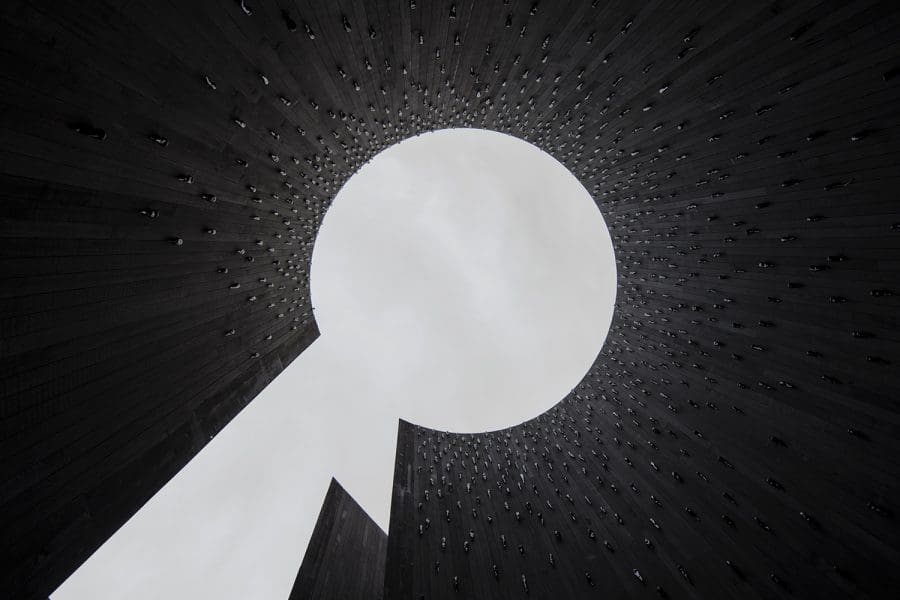
Glass yams and other bush foods are a recurring symbol in Scarce’s work. She often uses the yams en masse, with each individual piece taking on a unique form of its own through the process of glassblowing. Scarce sees them as an extension of herself, and a reference to food, culture and Aboriginal ways of life on her Country.
“Glass really opened me up a lot as an artist in talking about my identity, particularly as a woman and as an Aboriginal woman”, says Scarce, “it’s empowering in a way because it’s so physically draining, but you’re creating these living objects, literally blowing life into them.”
Her works traverse an astounding range of emotional registers, often within singular works; they walk a line between darkness and light.
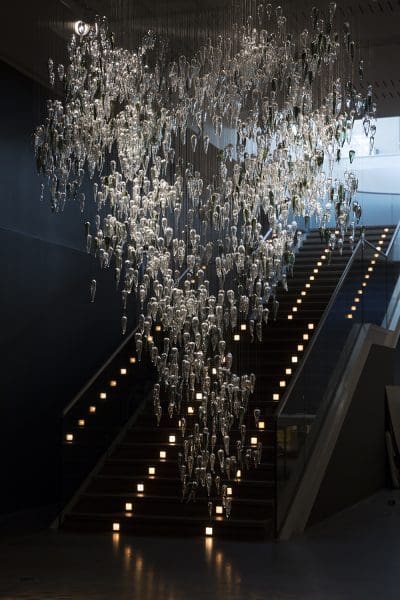
Thunder Raining Poison, commissioned for 2015 Tarnanthi festival and now in the collection of the National Gallery of Australia, is an installation of a dissipating cloud made from glass yams. It’s a devastating work, which references the Maralinga nuclear tests – the yams representing people who perished as a result of the fallout. Two thousand hang all together, and the shadows cast by the looming mass recall a bruise, an injury that is yet to heal. It’s not only striking it provides a space to grieve, to honour, to pay respects, to remember and to come together.
In a similar way, Blood on the wattle has a devastating beauty and silencing effect. Shown at the Personal Structures exhibition at the 55th Venice Biennale, and in NGV’s Who’s Afraid of Colour?, the work consists of a Perspex coffin with some 400 pitch-black yams lying in a pile, and refers to a massacre at Elliston, South Australia. The way the light hits the glass of the yams eerily animates them.

In contrast, Remembering Royalty, commissioned by curator Hannah Presley for the Australian Centre for Contemporary Art’s A Lightness of Spirit is the Measure of Happiness is an exultant remembering and honouring of her family members. She blew yams and bush plums in glass to give as gifts to her ancestors, whose large-scale portraits were hung lovingly in the gallery. “A lot of people said it felt sad – in a way it was, I guess. But that work was so full of joy and love.”
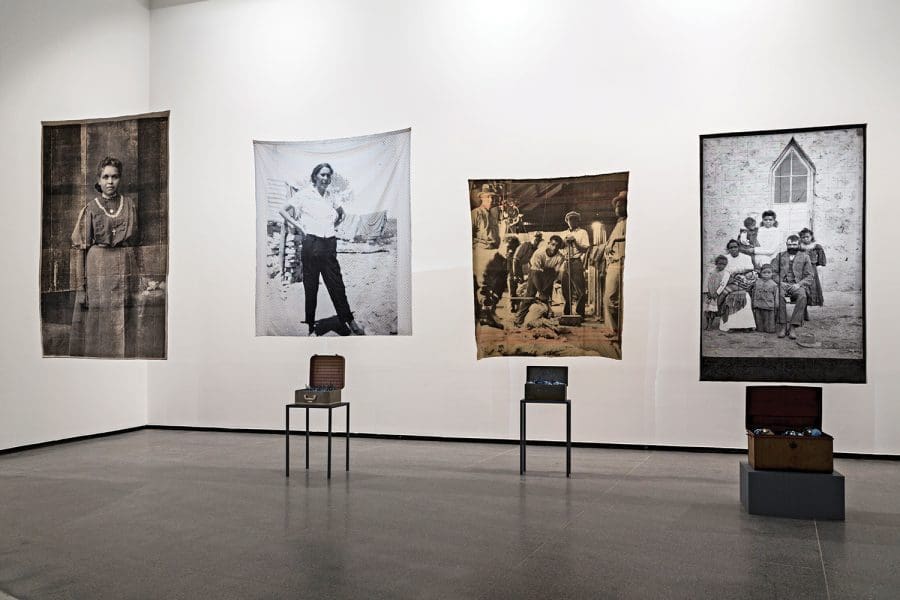
This emotional weight of her blown glass works will imbue the In Absence architectural commission. She envisages the two chambers having a heartbeat, as if the structure is alive “In Absence might be black, and have black yams inside it, but it’s going to be a living, breathing pavilion, with talks and programs inside it. It will hold knowledge, like a guardian or keeper of stories.”
In Absence
Yhonnie Scarce and Edition Office
National Gallery of Victoria 2019 Architecture Commission
NGV International
8 November – April 2020